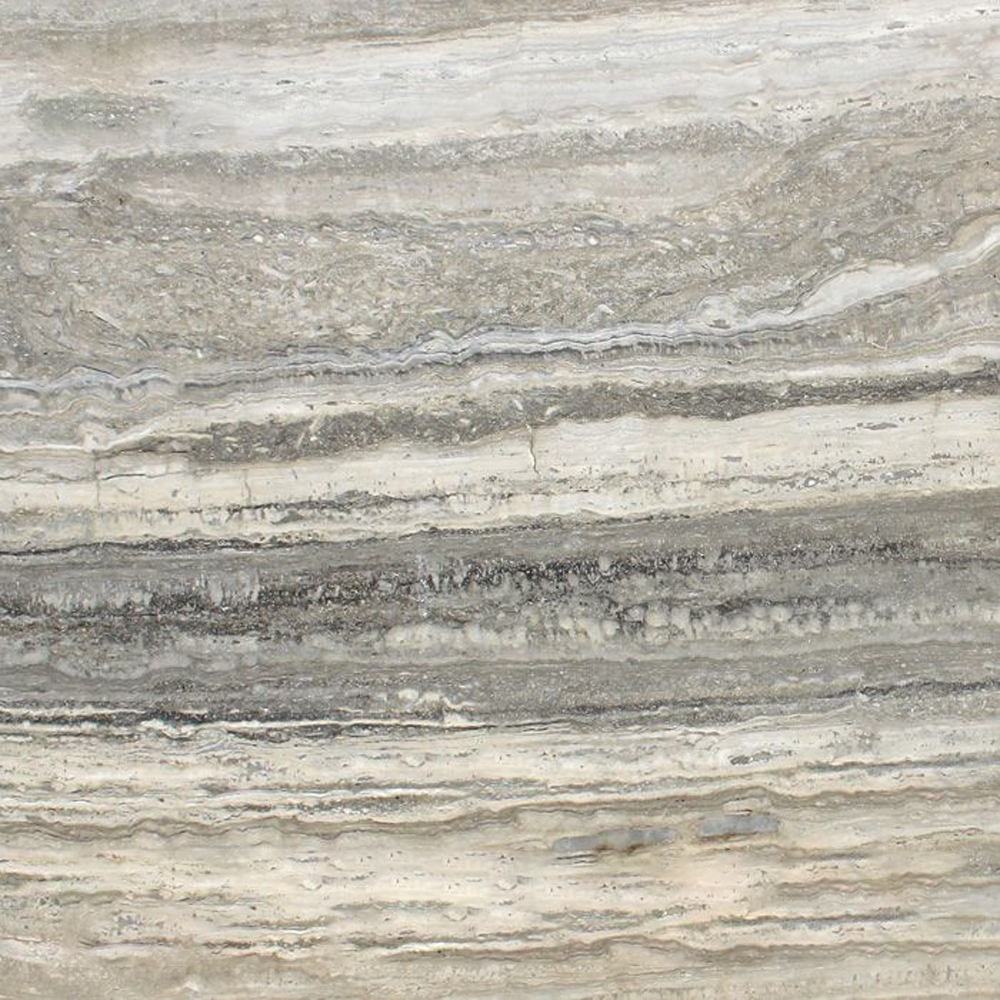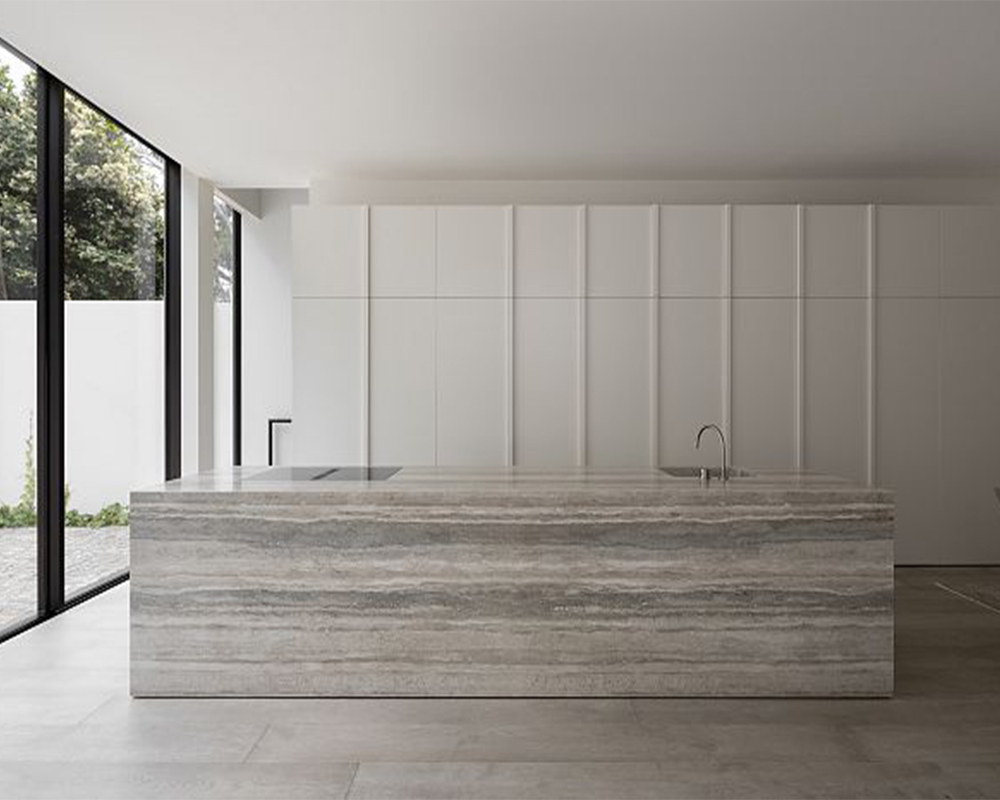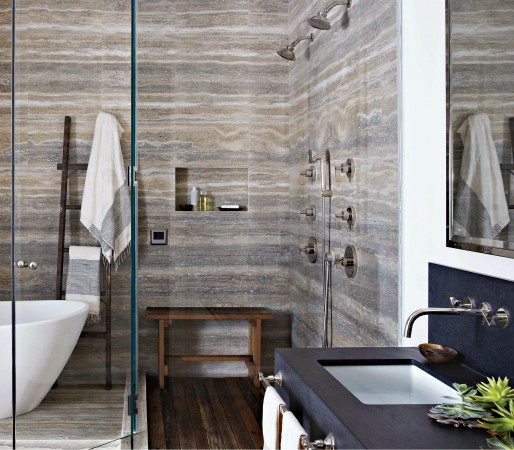
In the realm of natural stones, Silver Travertine stands as a beacon of timeless elegance, captivating with its subtle beauty and versatile charm. Originating from the heart of geological processes, this marble variety graces spaces with a distinctive silver-gray palette, creating an atmosphere of sophistication and tranquility. Join us on a journey through the geological origins, aesthetic characteristics, and diverse applications of Silver Travertine.
Geological Origins: Unveiling Nature’s Mosaic
Silver Travertine, a sedimentary rock, unveils its unique charm through the intricate interplay of minerals and geological processes. Formed by the precipitation of calcium carbonate in mineral-rich groundwater, this marble variety is characterized by its silver-gray tones. Quarried from select locations worldwide, Silver Travertine stands as a testament to the geological artistry that transforms ordinary minerals into a stone of refined beauty.
Aesthetic Characteristics: The Subtle Beauty of Silver Gray
What sets Silver Travertine apart is its understated yet captivating aesthetic appeal. The silver-gray tones, ranging from soft silver to deeper grays, infuse spaces with a sense of tranquility and sophistication. The characteristic travertine veining adds a layer of visual interest, creating a subtle mosaic that tells the story of geological epochs. The aesthetic characteristics of Silver Travertine make it a sought-after choice for architects, designers, and homeowners seeking to infuse their spaces with a timeless elegance.
Cultural Significance: A Stone of Refined Tranquility
Silver Travertine carries cultural significance that transcends its geological origins. Its serene hues and versatile patterns have made it a symbol of refined tranquility, gracing interiors of historical structures and modern architectural wonders alike.
Historical Presence: Silver Elegance Across Civilizations
The historical application of Silver Travertine can be traced through various civilizations. From the grandeur of ancient Roman structures to the intricate designs of Islamic architecture, this marble variety has left an indelible mark on historical buildings, showcasing its timeless allure and enduring beauty.
Modern Adaptation: Silver Travertine in Contemporary Design
In contemporary design, Silver Travertine continues to be a canvas for modern creativity. Its silver-gray tones and distinctive patterns provide a versatile backdrop for a range of design styles. From sleek urban interiors to rustic-chic spaces, this marble variety adapts to diverse design contexts while retaining its characteristic elegance.
Quarrying and Extraction: Precision in Silver Serenity
The journey of Silver Travertine begins in carefully selected quarries where skilled craftsmen extract blocks with precision. Quarrying this unique marble variety requires careful consideration to ensure the preservation of its silver-gray tones and intricate patterns. Modern quarrying techniques and technology have enhanced the precision with which Silver Travertine is extracted, allowing for the creation of high-quality slabs.
Processing and Finishing: Crafting Silver Elegance
Once extracted, Silver Travertine undergoes a series of processes to reveal its full splendor. Cutting, polishing, and finishing are crucial stages that transform rough blocks into refined slabs or tiles. The polishing process enhances the marble’s inherent luster, creating a surface that adds a touch of luxury to any space.
Cutting and Shaping: Precision in Silver Splendor
Craftsmen carefully cut Silver Travertine into slabs, tiles, or custom pieces, ensuring that each cut showcases the marble’s unique veining and silver-gray tones. The precision in cutting and shaping allows for the creation of bespoke pieces that cater to the specific design requirements of diverse projects.
Polishing and Honing: Unveiling Silver Luster
Polishing Silver Travertine is a transformative process that unveils its inherent elegance. The high-gloss finish accentuates the marble’s reflective qualities, creating a surface that adds a touch of luxury to any space. Additionally, honing offers a matte finish, providing a different aesthetic while maintaining the marble’s silver serenity.
Applications in Design: Silver Elegance in Every Space
Silver Travertine’s versatility transcends design styles, making it a coveted choice for architects and designers across the spectrum. Its silver-gray aesthetics and timeless appeal allow it to seamlessly integrate into both classic and contemporary design contexts.
Classic Opulence: Silver in Traditional Settings
In classic interiors, Silver Travertine brings a sense of timeless opulence. Whether used in flooring, wall cladding, or ornate details, its silver-gray tones complement traditional design elements, adding a touch of luxury to spaces with a nod to the past.
Contemporary Sophistication: Silver in Modernity
In contemporary design, Silver Travertine becomes a statement piece. Its silver-gray background provides a sleek, sophisticated backdrop for modern interiors. From minimalist bathrooms to avant-garde kitchens, the marble’s elegance transforms spaces into contemporary works of art.
Global Presence: Silver Elegance Across Continents
Silver Travertine’s global presence is a testament to its universal appeal. From Europe to Asia, the Americas to the Middle East, architects and designers around the world have embraced the elegance and sophistication that this marble variety brings to diverse design contexts.
European Grandeur: Silver in Timeless Elegance
In Europe, where classical architecture meets modern design, Silver Travertine finds its place in both historic structures and contemporary spaces. Its presence in opulent residences, museums, and iconic landmarks speaks to its timeless allure in the Old World.
Asian Aesthetics: Silver Sophistication in Design
In Asia, Silver Travertine complements the rich cultural aesthetics of the region. Its use in luxury residences, hotels, and commercial spaces adds a touch of silver sophistication to interiors while harmonizing with the diverse design styles found across Asia.
Americas’ Embrace: Elegant Serenity Beyond Borders
In the Americas, Silver Travertine has become synonymous with elegant serenity. Architects and designers in North and South America have utilized this marble variety to create spaces that exude sophistication, from chic residences to high-end commercial establishments.
Challenges and Opportunities: Navigating the Marble Industry Landscape
The marble industry, including Silver Travertine extraction and processing, faces challenges and opportunities as it navigates the dynamic landscape of design trends, environmental considerations, and global demand.
Design Harmony: Meeting Evolving Aesthetics
As design trends evolve, the challenge lies in ensuring that Silver Travertine continues to meet the demands of evolving aesthetics. Designers and architects must navigate the delicate balance between timeless elegance and contemporary design to ensure that this silver masterpiece remains relevant in the ever-changing landscape of interior and architectural design.
Environmental Responsibility: Quarrying and Sustainability
The quarrying of Silver Travertine, like any natural resource extraction, poses environmental challenges. Responsible quarrying practices, reforestation initiatives, and sustainable extraction methods are essential to mitigate the environmental impact. As the industry evolves, there is an increasing focus on sustainable practices that uphold the beauty of Silver Travertine while respecting the natural environment.
Global Demand: Meeting the Appetite for Elegance
The global demand for Silver Travertine presents both opportunities and challenges. Meeting


